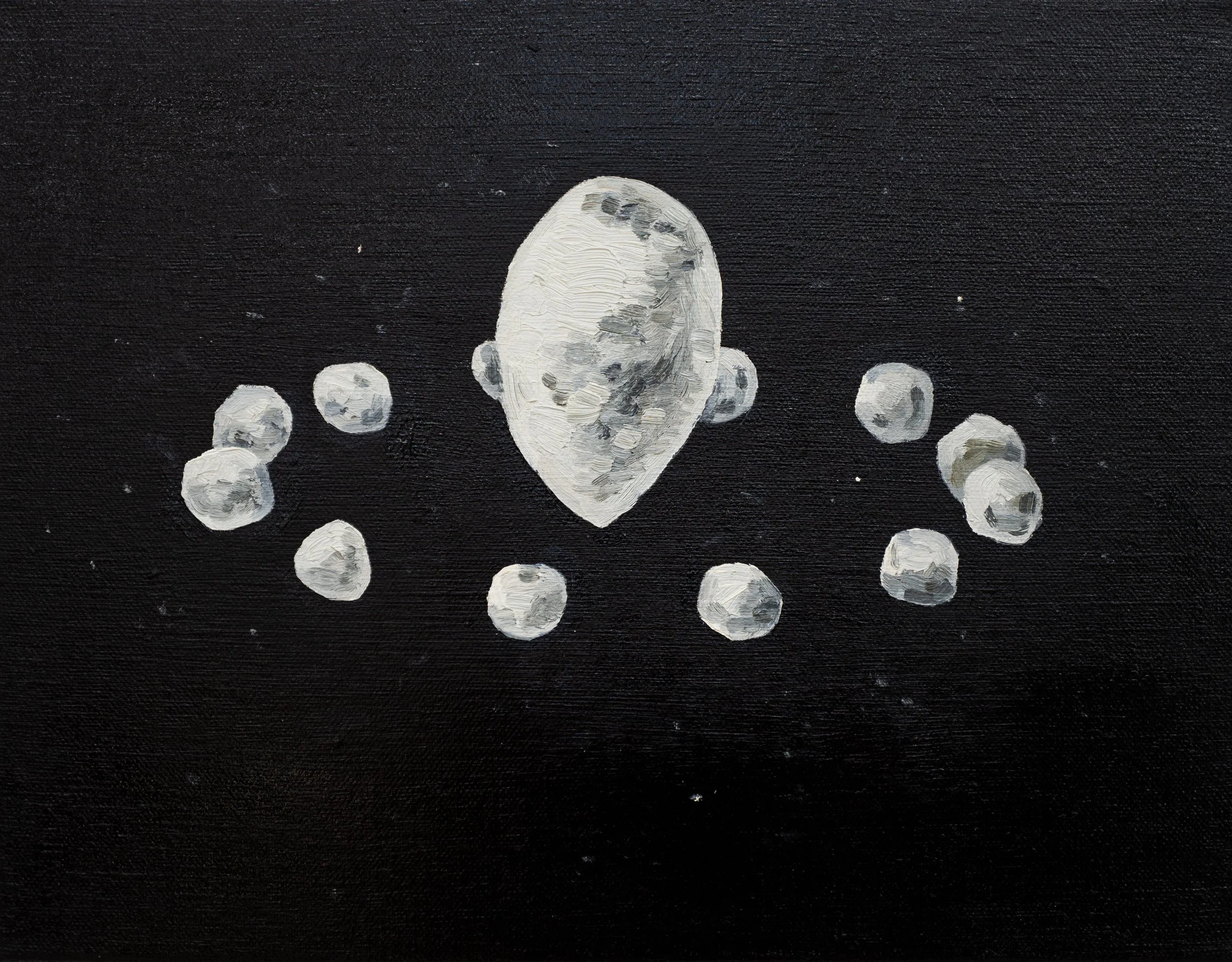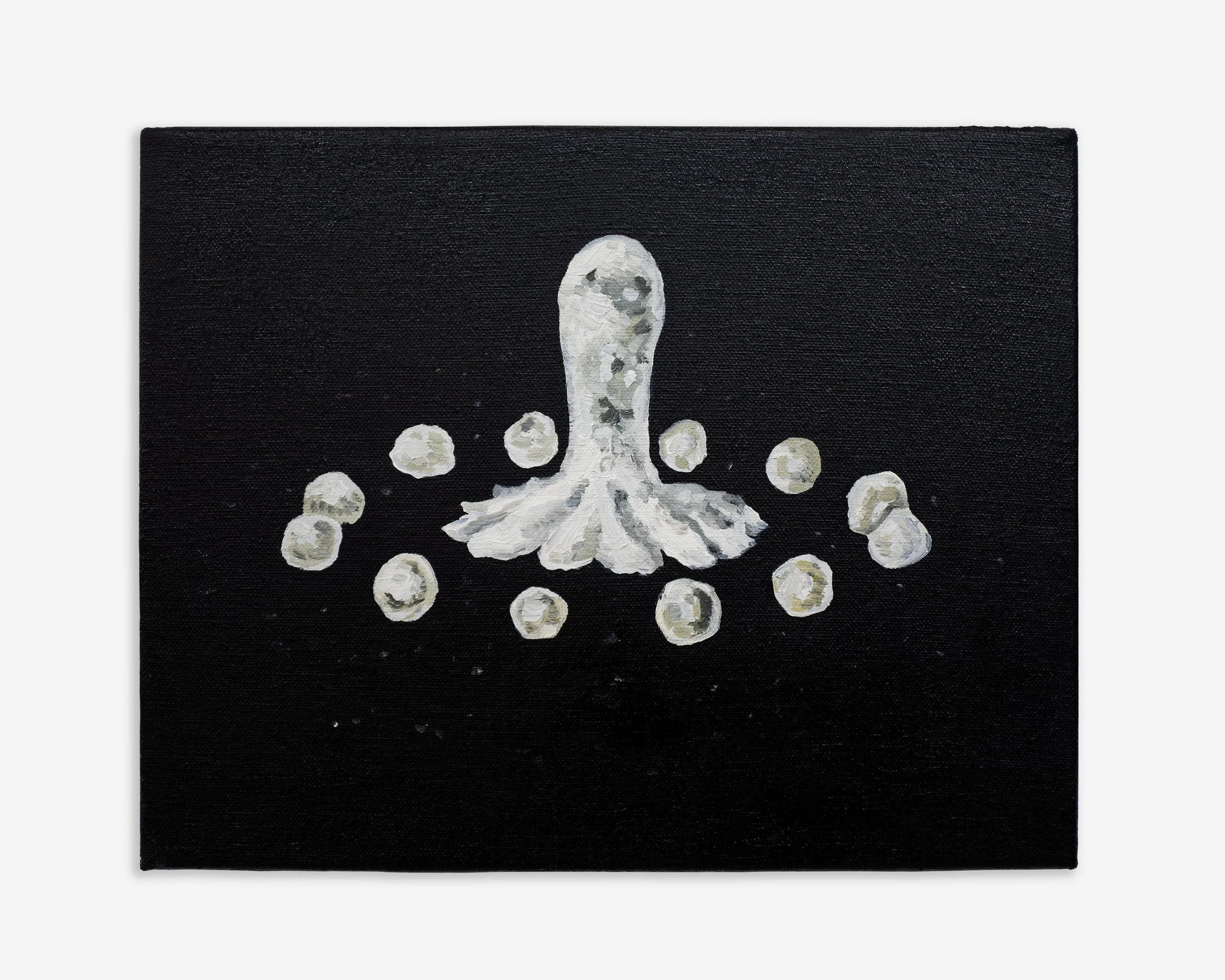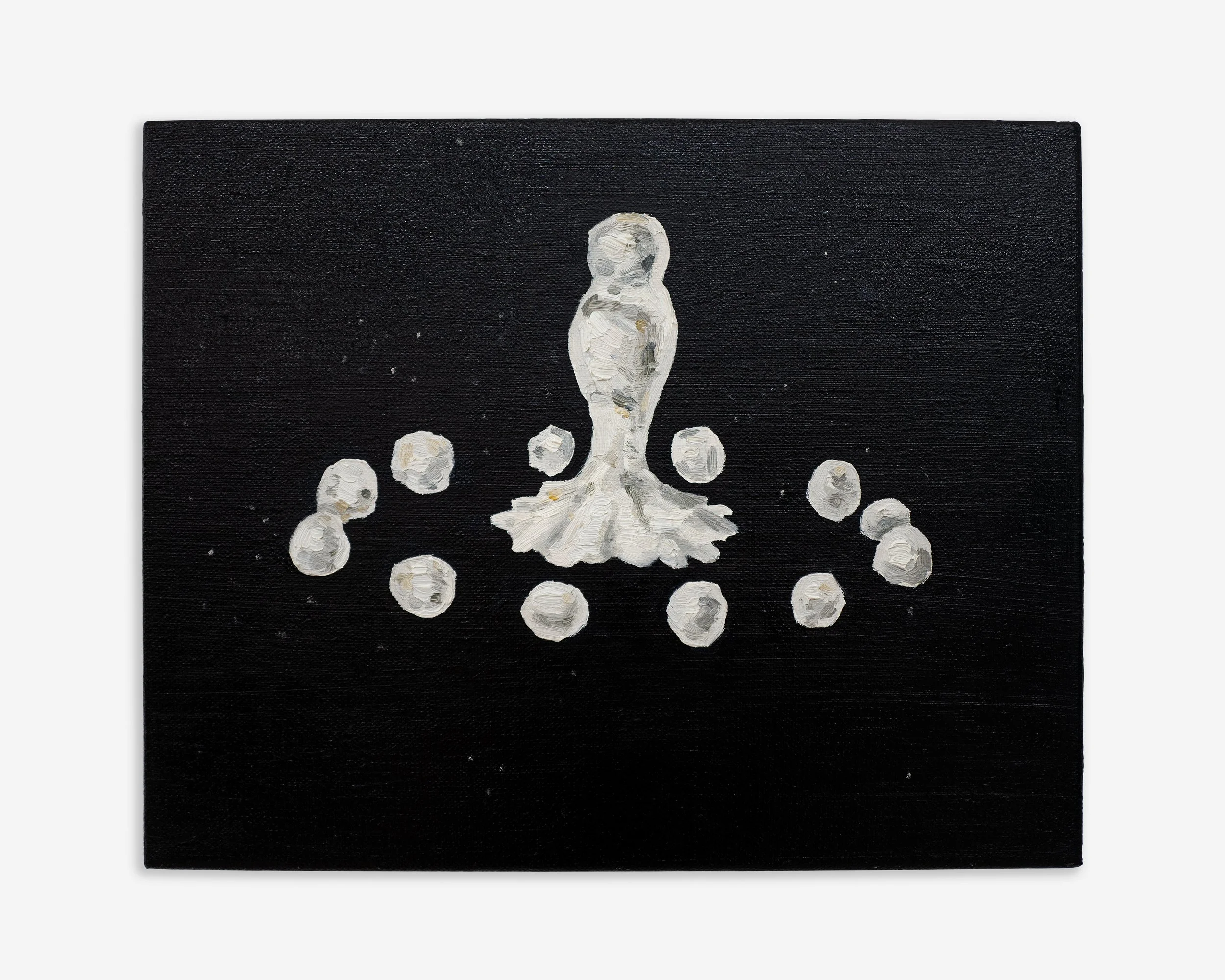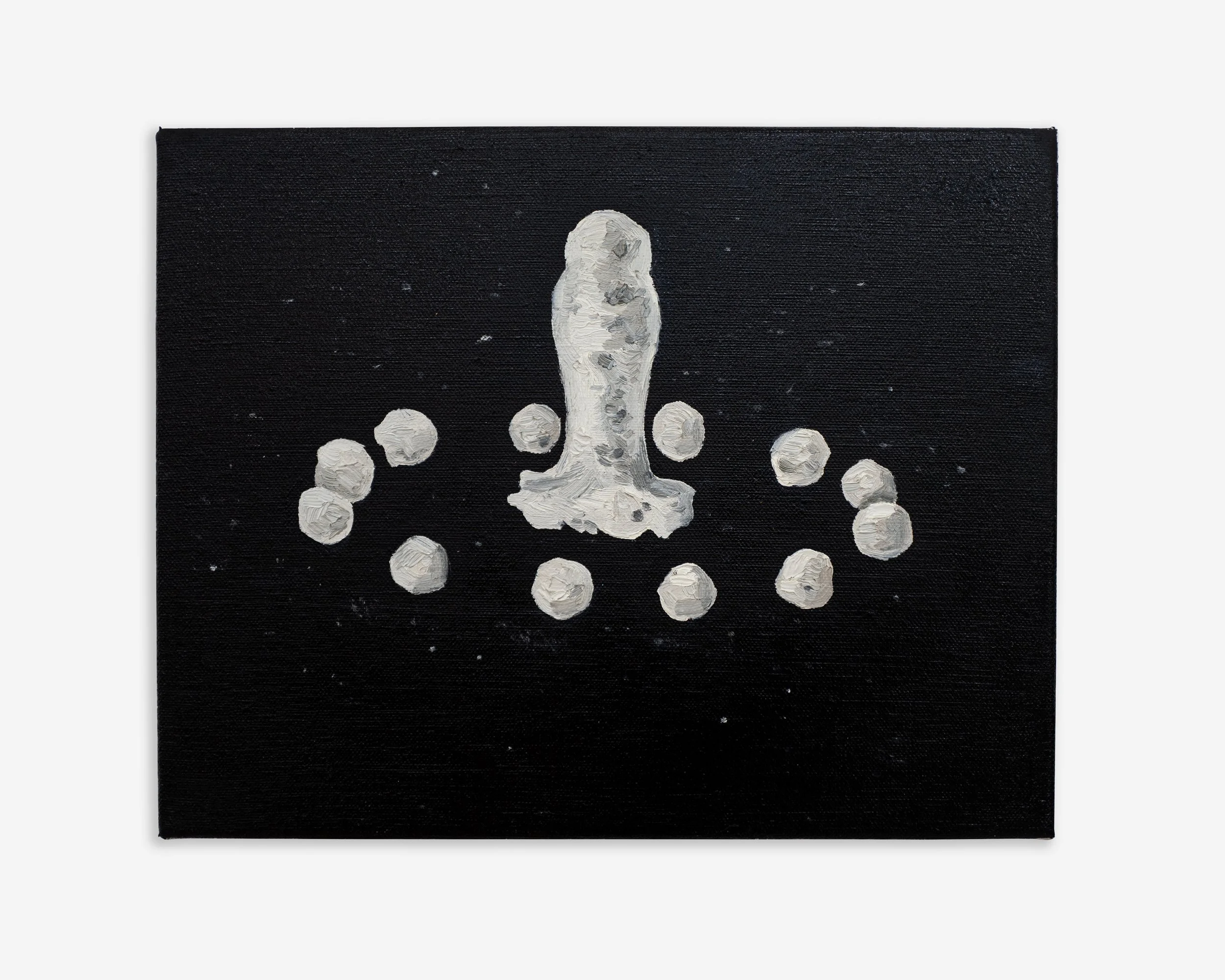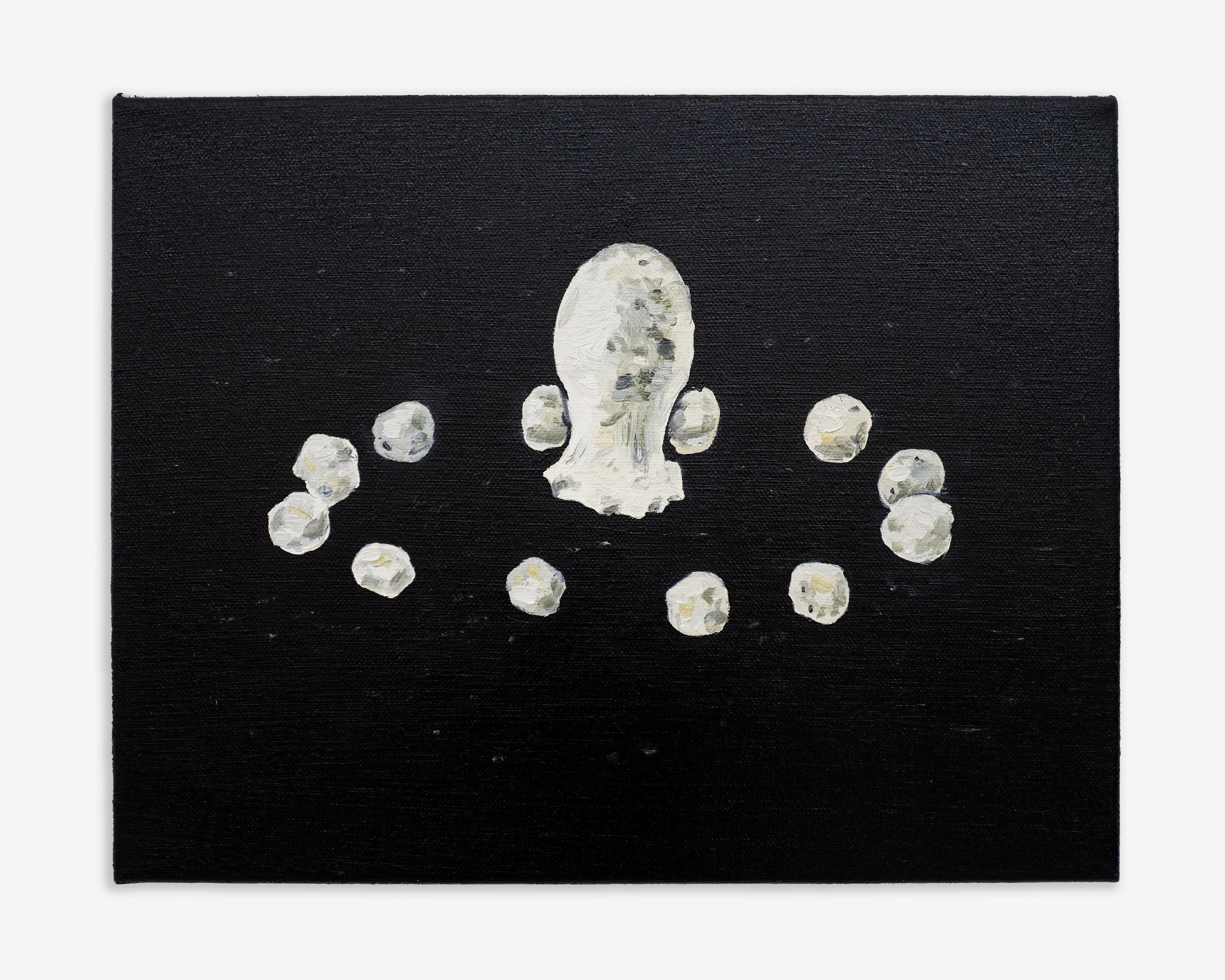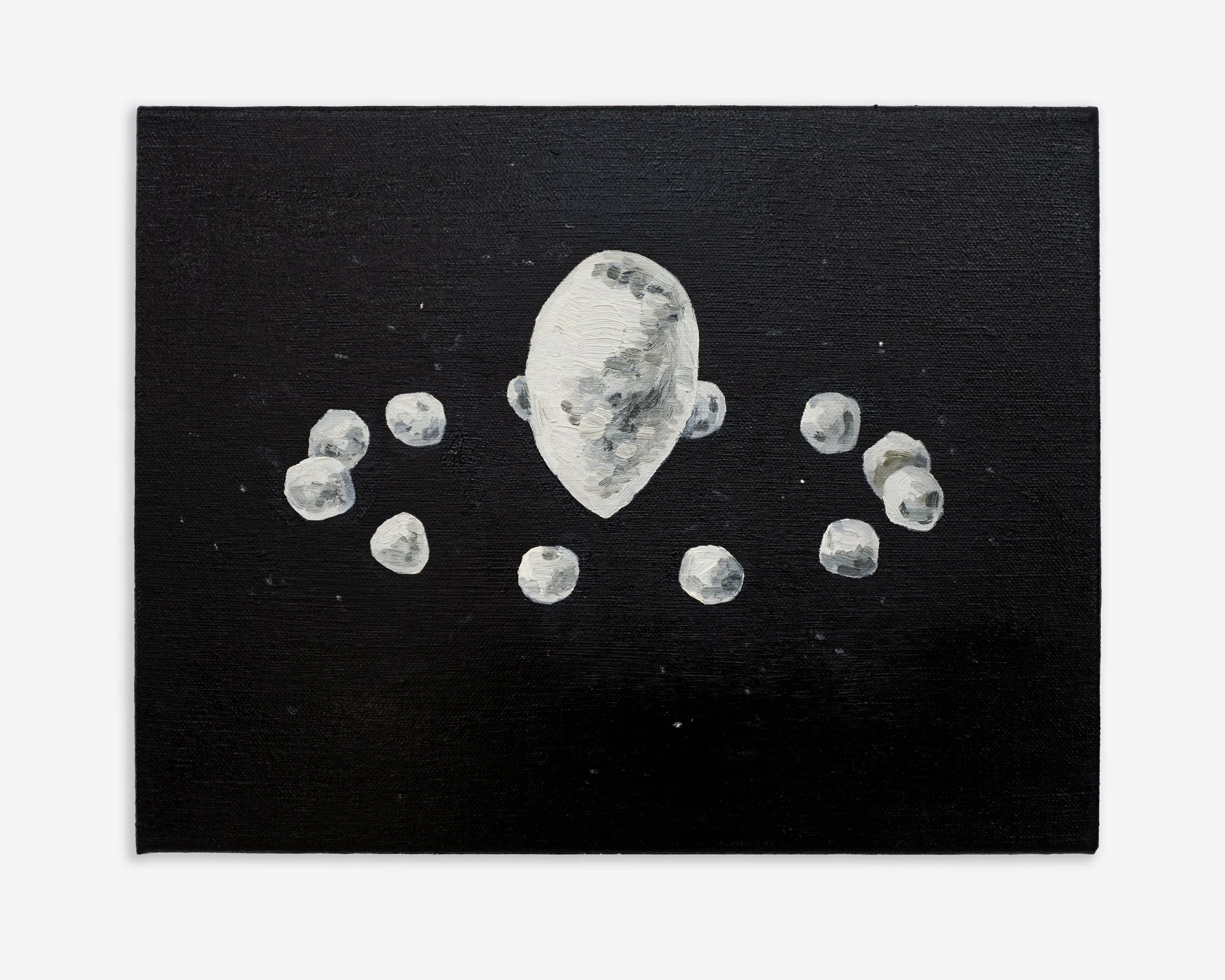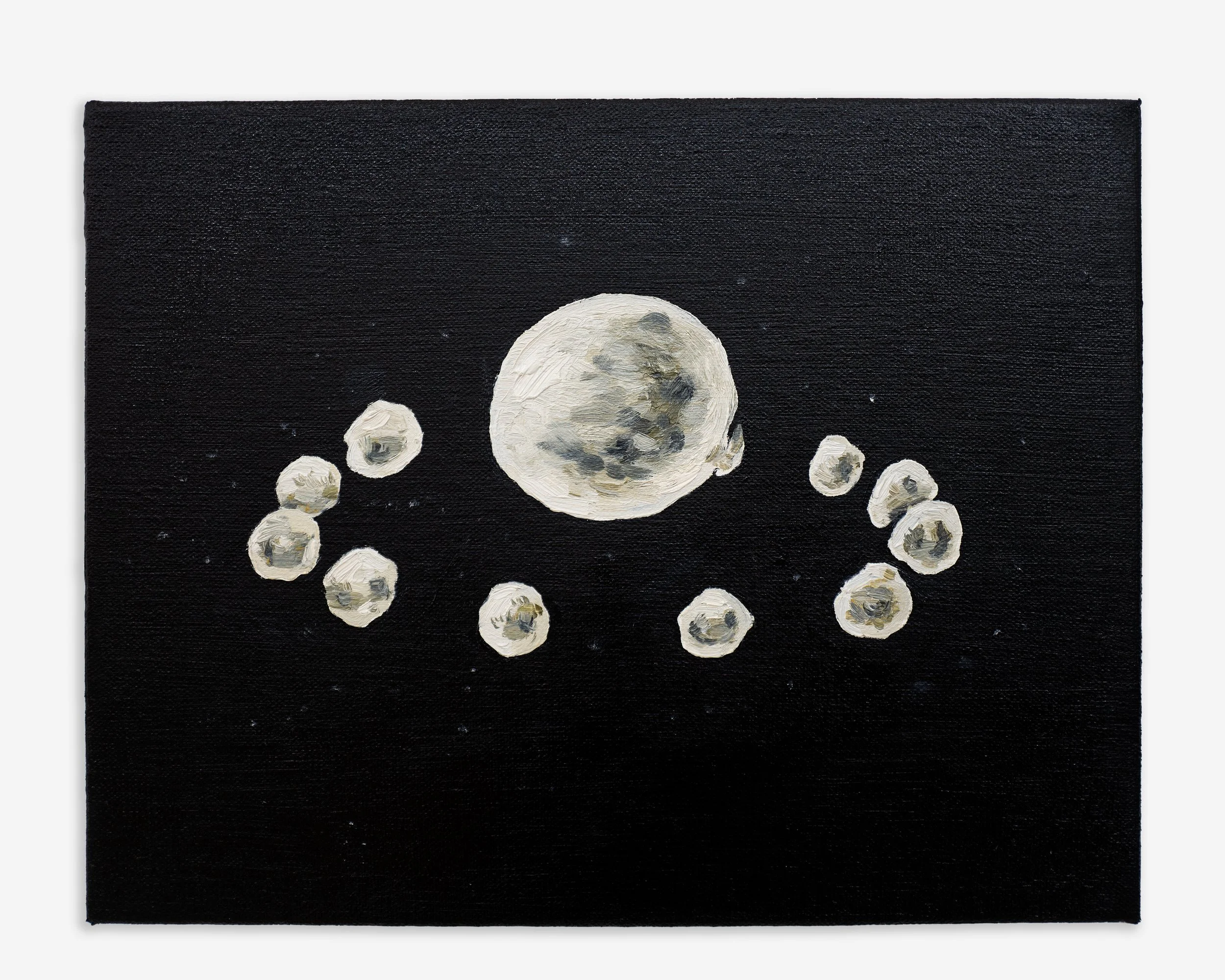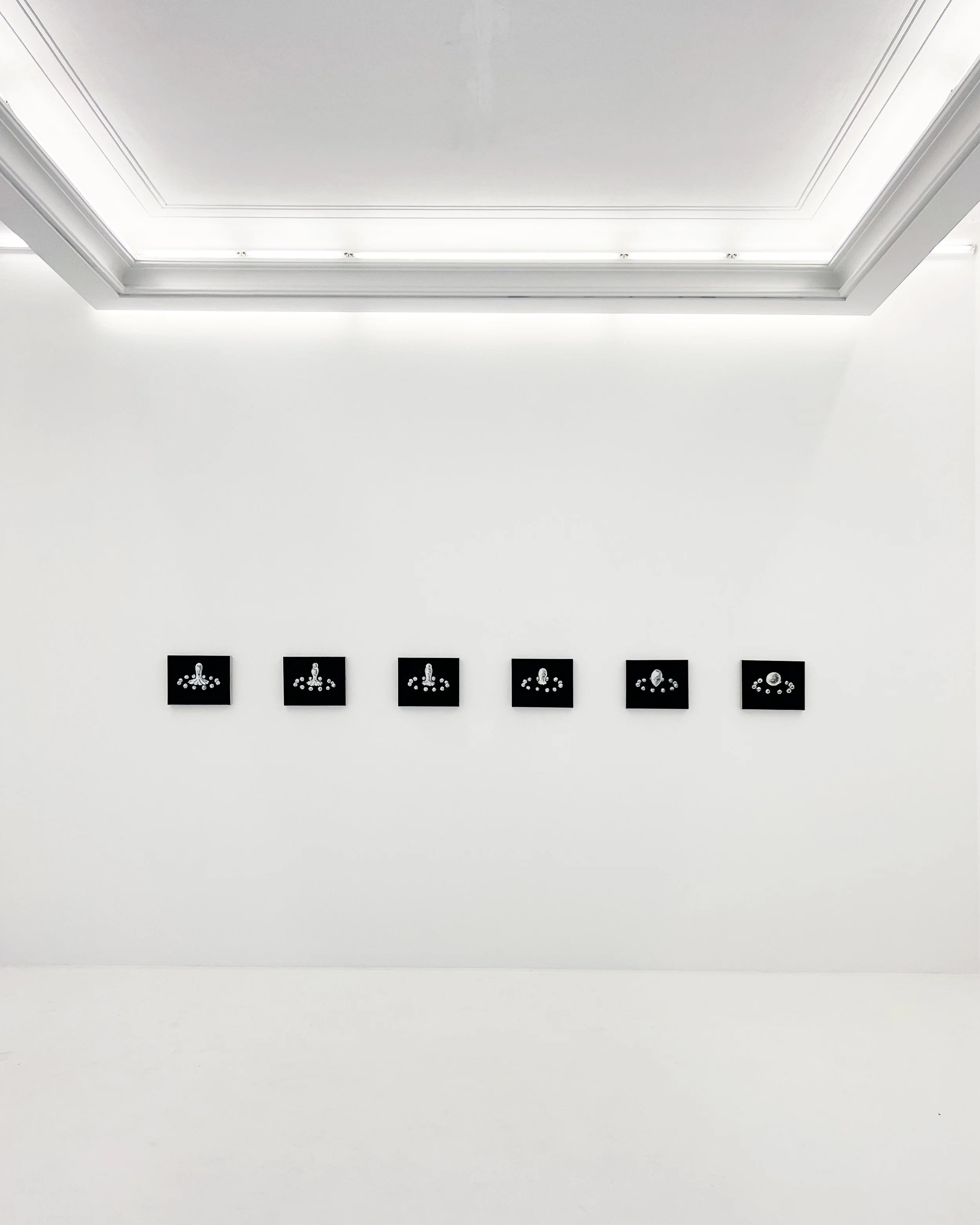The splash of a drop 1, 2022
The splash of a drop 1, 2022
Oil on linen
In 6 parts, each: 28 x 36 cm (11 x 14 in)
Overall: 28 x 216 cm (11 x 84 in)
In his 1895 photographic series of the same title, English physicist Arthur Mason Worthington—a pioneer in high-speed photography—studied both the physics and aesthetics of a splashing drop. Compiled into a book, the images capture a water droplet at various stages of dissolution. While the frontispiece presents three photographs of the splash, the photographic technology of the time was unable to accurately document the finer stages of its descent. As a result, the remaining images relied on hand-drawn illustrations, which were then considered a more precise method of recording motion. The splash of a drop 1(2022) revisits this era, when photography first challenged painting as a documentary medium. The emergence and evolution of photography fundamentally shaped how reality is perceived and recorded. Tan Mu celebrates the tactile, handmade qualities of painting, reinterpreting the process as a nostalgic reflection in an age oversaturated with images.
DAWN, September 9 – October 7, 2022, Peres Projects, Berlin
DAWN, September 9 – October 7, 2022, Peres Projects, Berlin
Q: Could you describe the creative background of your painting The Splash of a Drop 1 (2022)?
Tan Mu: This painting was inspired by the book The Splash of a Drop (1895), which contains a series of remarkable images depicting the various stages of a water droplet's dissolution. Although the frontispiece illustration includes three photographs of splashing milk drops, the photographic technology at the time may not have been advanced enough to capture the finer details of a droplet’s descent with absolute precision. Worthington meticulously repeated the process over and over again, allowing him to document the distinct appearance of each stage on paper. I am fascinated by the transient yet continuously repeating nature of this phenomenon. Through painting, I revisited and documented this sequence of photographic moments. The Splash of a Drop 1 (2022) is similar to my earlier work TRINITY TESTING (2020) in that both document transformations occurring within an extremely short time span. These two series were exhibited together in Berlin, and their dimensions are identical. While TRINITY TESTING portrays the immense energy of a nuclear explosion, associated with heat, The Splash of a Drop 1 captures the subtle variations of a water droplet’s splash. Despite their different subjects, both works explore how technology enables us to observe and record fleeting transformations that would otherwise be imperceptible. This is also part of my broader inquiry into how technology shapes our perception of the world.
Q: You have mentioned that the documentary nature of painting is important to you. Why did you choose painting over photography to record these fleeting moments?
Tan Mu: Painting is a crucial medium for me, particularly because of its ability to document. However, this raises an interesting question: if the goal is to record reality, why not use photography instead? This led me to reflect on the tension between the purpose and function of painting versus photography. During my university studies, I took photography courses covering both traditional and modern techniques. One key concept in photography is the "decisive moment"—capturing a critical instant in the real world. I believe this idea also applies to painting, though the tools differ. Photography, whether through light, chemical reactions, or digital technology, captures a sliver of time. Painting, on the other hand, offers greater possibilities because it incorporates the artist’s physical gestures and embodied memory, allowing for an extension of time and the infusion of emotion. Just as photographic effects can be altered by chemicals or exposure time, painting is also a process—but at its core, it remains an attempt to capture that decisive moment. By choosing painting, I deliberately invest time in re-recording and amplifying these visual details, challenging the immediacy of photography while using painting to reveal subtle transformations in a way that engages both time and the human touch.
Q: How do you perceive the relationship between technology and artistic creation?
Tan Mu: Technology is an essential tool in artistic creation, enabling us to see and record moments that would otherwise be invisible or difficult to capture. Whether through photography, painting, microscopes, or telescopes, technology expands our understanding of the world. However, artistic creation is not merely the application of technology—it also involves human emotion, memory, and subjective experience. While technology can capture a fleeting instant, art, through human intervention, imbues these moments with deeper meaning and interpretative possibilities. This intersection of technology and art continually pushes me to explore new modes of expression. Throughout my creative process, I have come to realize that whether it is the moment of a droplet’s splash or the telescopic capture of celestial bodies, these technologies extend our vision, allowing us to preserve, magnify, and deeply observe the "decisive moment." This pursuit of heightened visual experience is at the core of what I aim to capture and express in my work.
